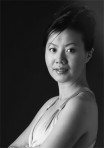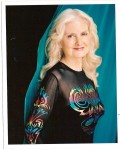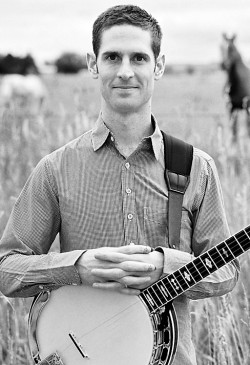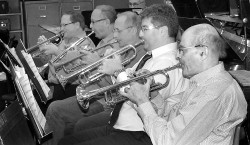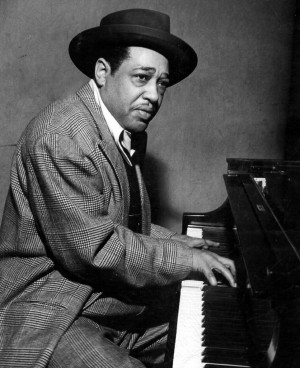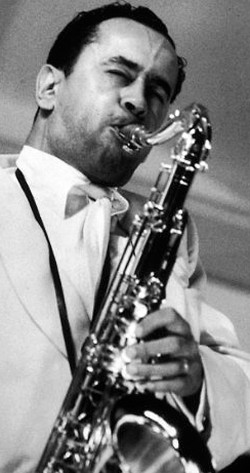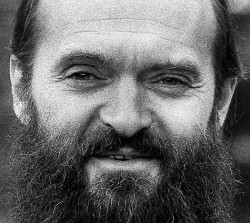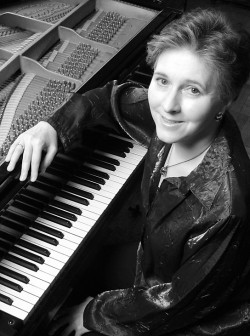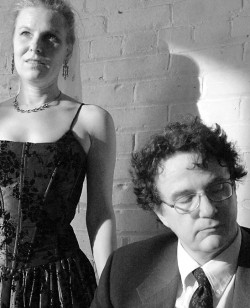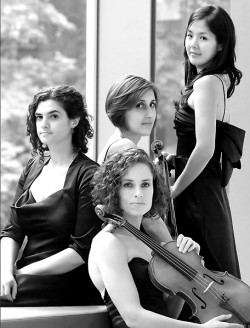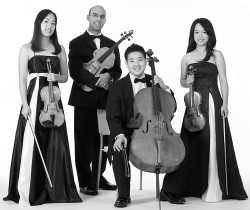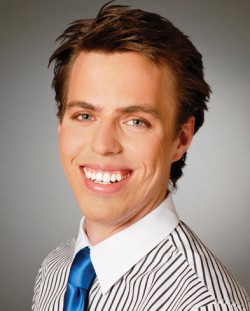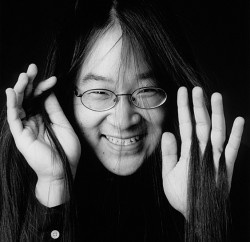Rarities Old and New
Major productions from the Canadian Opera Company and Opera Atelier continue into November. But there are also numerous productions from the smaller companies that give the Toronto opera scene so much diversity and vibrancy.
Opera by Request will present a concert revival of Genoveva (1850), Robert Schumann’s only opera. Schumann, most famous today for his piano music, four symphonies, and his amazing output of Lieder, always nourished the dream of a “German opera.” Genoveva is based on a medieval legend concerning Genevieve of Brabant. It tells of Genoveva, the chaste wife of Siegfried of Trier, falsely accused of adultery by his servant Golo in revenge for rejecting his advances. Siegfried eventually discovers Golo’s deception and restores his wife’s honour. Richard Wagner told Schumann the libretto was undramatic, and the negative criticism of the work at its premiere discouraged Schumann from ever writing another opera.
Nevertheless, various recent revivals have often been enthusiastically received. Conductor Nikolaus Harnoncourt stated, “Genoveva is a work of art for which one should be prepared to go to the barricades,” and the DVD he recorded at the Zurich Opera House in 2008 has brought many over to the cause.
The Opera by Request presentation will feature artistic director William Shookhoff at the piano accompanying Doug MacNaughton as Siegfried, Lenard Whiting as Golo and Mila Iankova as Genoveva. This will be only the second time the work has been performed in Canada, the first presented by Opera in Concert, where Whiting and MacNaughton also sang their respective roles.
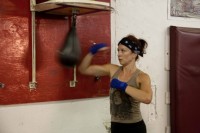 Asked why the work has remained a rarity, Shookhoff admits that it could be “dramatically stronger,” but says, “Perhaps because the initial productions were beset with problems, and because Schumann had no reputation as an opera composer, it was easy for the work to be ignored.” MacNaughton adds that “Schumann didn’t have the time nor the energy to be a relentless self promoter like Richard Wagner.” Both are convinced of the work’s importance. MacNaughton calls it “the missing link between Weber and Wagner.” Shookhoff notes that “The piece is musically very powerful, and Schumann’s unique orchestrations, often unfairly maligned, carry the day. It is a perfect quartet opera, where each of the four principals is given arias of exquisite beauty (Schumann’s gift as a composer of song comes through), as well as well-constructed ensembles that reach powerful climaxes. The choral writing is on a par with Schumann’s best choral works.”
Asked why the work has remained a rarity, Shookhoff admits that it could be “dramatically stronger,” but says, “Perhaps because the initial productions were beset with problems, and because Schumann had no reputation as an opera composer, it was easy for the work to be ignored.” MacNaughton adds that “Schumann didn’t have the time nor the energy to be a relentless self promoter like Richard Wagner.” Both are convinced of the work’s importance. MacNaughton calls it “the missing link between Weber and Wagner.” Shookhoff notes that “The piece is musically very powerful, and Schumann’s unique orchestrations, often unfairly maligned, carry the day. It is a perfect quartet opera, where each of the four principals is given arias of exquisite beauty (Schumann’s gift as a composer of song comes through), as well as well-constructed ensembles that reach powerful climaxes. The choral writing is on a par with Schumann’s best choral works.”
Take this rare opportunity to judge for yourself and attend the November 17 performance at University of Toronto, Scarborough Campus or the November 20 performance at Trinity Presbyterian York Mills, 2737 Bayview Avenue, at Highway 401. For more information visit www.operabyrequest.ca.
Moving to the present, Urbanvessel follows its acclaimed sewing-machine opera Stitch, with the world premiere of Voice-Box. The piece was inspired by the unusual combination of talents of mezzo-soprano Vilma Vitols, known from her appearances with Opera Atelier, but who is also an accomplished boxer. Composer Juliet Palmer says, “The result is a kind of fight night where the voice and body are both challenged. The audience gets a great sense of the power of women and the power of the singing voice.” Librettist Anna Chatterton adds, “We were also inspired by the history of female boxing. Up until 1991 women were not allowed to box until the lawyer Jenny Reid who had been training as a boxer took it to court and won the right for women to legally fight in the ring.” Women boxers last fought in the Olympics in 1922 and will finally do so again in 2012.
Asked about the structure of the work, Chatterton explains, “Voice-Box is similar to Stitch in that it is variations on the theme of female boxers rather than a linear story. This time round dance plays a larger role in the piece as choreographer Julia Aplin was on board from the beginning as a creator. We are looking at all the aspects of being a female boxer – the experience of being in the ring, fighting, training, getting ready to fight, female aggression, the choice to punch and to get punched, society’s assumptions when they see a woman with a black eye, and the history of female boxing. The opera is structured in a series of six bouts, with a fight of sorts in each bout.”
Palmer says, “The music took me to some strange new places. The electronic music is inspired by the clichés of sports themes as well as the totally captivating and visceral sounds of the boxing gym (the sounds of bells, punching bags, squeaking ropes and the hisses and grunts of a good fight). The vocal performances range from operatic combat to throat singing with a tango along the way. I needed to be able to show both the strength and vulnerability of these four incredible women.” The four performers are Vitols herself, Neema Bickersteth, Savoy Howe and Christine Duncan. Performances runs from November 10 to 14 at the Brigantine Room in the York Quay Centre, 235 Queen’s Quay West. For tickets phone 416-973-400 or visit www.harbourfrontcentre.com.
Christopher Hoile is a Toronto-based writer on opera and theatre. He can be contacted at: opera@thewholenote.com.


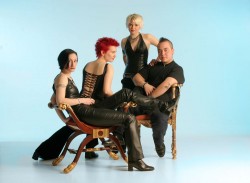
 Anyone who’s been to a Toronto Consort performance knows Laura Pudwell – her marvellously flexible, clear and expressive mezzo voice has long been a feature in their concerts and in performances (from early music to contemporary) in Southern Ontario and internationally. With some friends of hers (Julie Baumgartel, baroque violin, Margaret Gay, baroque cello and Lucas Harris, archlute), she’ll be presenting “Laura Pudwell and Friends.” This performance is a presentation of Classics at the Registry, and it takes place in Kitchener on November 14.
Anyone who’s been to a Toronto Consort performance knows Laura Pudwell – her marvellously flexible, clear and expressive mezzo voice has long been a feature in their concerts and in performances (from early music to contemporary) in Southern Ontario and internationally. With some friends of hers (Julie Baumgartel, baroque violin, Margaret Gay, baroque cello and Lucas Harris, archlute), she’ll be presenting “Laura Pudwell and Friends.” This performance is a presentation of Classics at the Registry, and it takes place in Kitchener on November 14.
